★ Why You'll Love this Recipe ★
Guys, this is a two-for-one deal. You can make homemade butter and you will get homemade buttermilk as a byproduct. All starting with heavy cream.
The process of making butter produces buttermilk as a byproduct, so don't just toss it. You can save it and culture it to use in recipes to add richness. Culturing buttermilk is as simple as adding cultures and giving it time to do its thing.
Homemade > Store-bought
And it's easier than you think.
Making your own butter is easy also. And the flavor is wonderful. It tastes more fresh than store-bought butter. You may never go back. The whole process takes about 15 minutes all said on done thanks to modern kitchen tools.
So, make a big batch. This homemade butter is freezer-friendly.
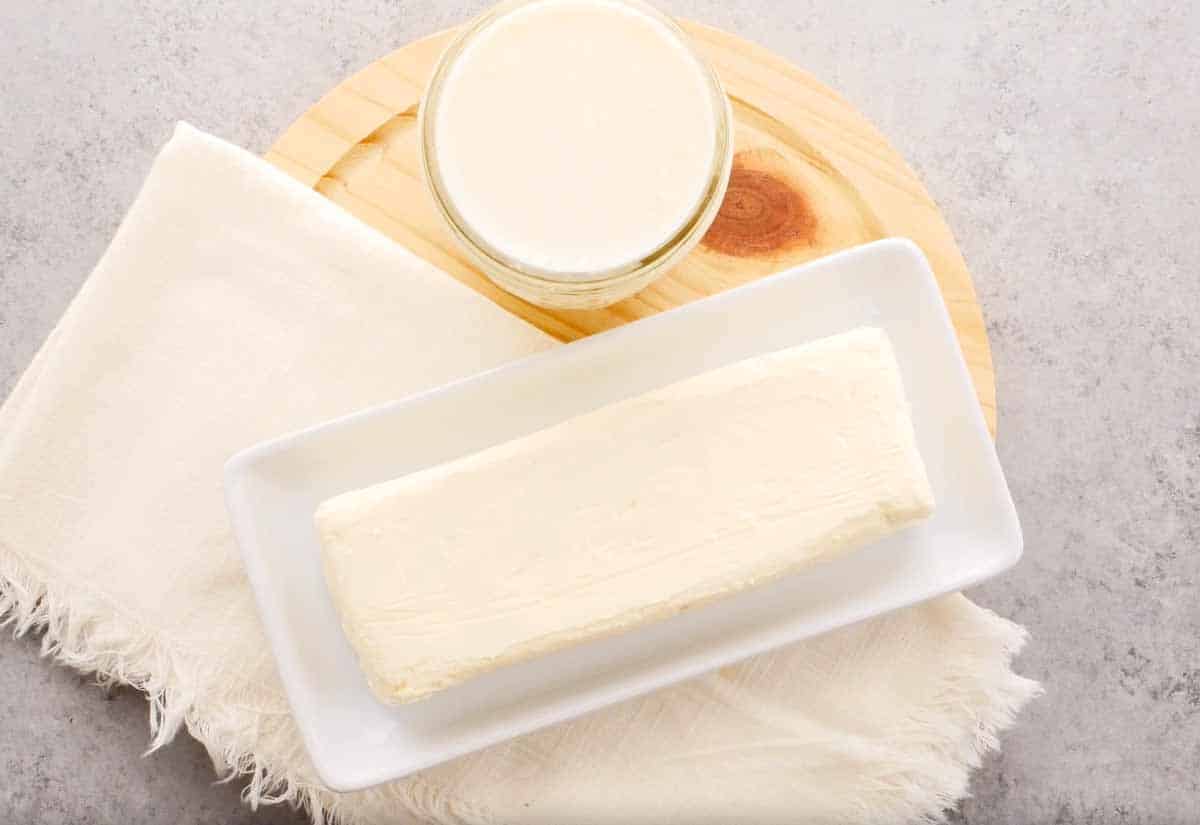
Read on to learn how to culture your leftover buttermilk to make delicious pancake or use it to tenderize chicken.
★ How to Make Butter ★
Homemade Butter in 15 Minutes
It's really easy to make homemade butter and doesn't take a lot of time either.
Once you sort out what tool you want to use to make your butter and buttermilk, you're truly half way there.
Here are the basic steps of the process. (The full recipe is further down).
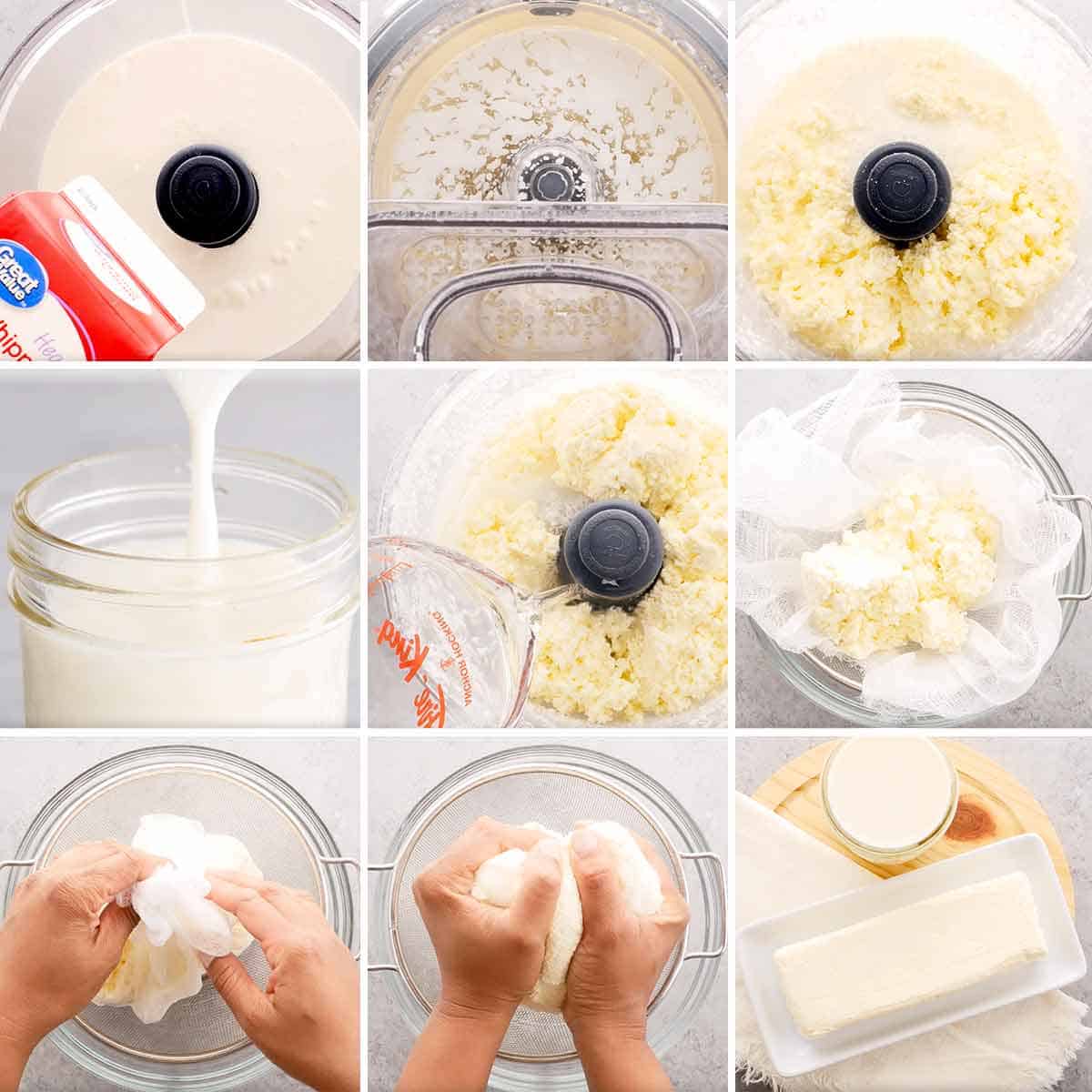
- Beat the heavy cream until is separates using a hand mixer, food processor or butter chun!
- Pour off the buttermilk and save it to be cultured. (more info below).
- Rinse the butter fat by adding cold water and blending again.
- Pour away the milky water. Repeat until water is clean.
Note: This step removes excess liquid that can lead to your butter spoiling. Your goal is to be left with just the fat of the milk. The fat will not spoil even if left out at room temperature but if any milk is left in the fat, that can spoil and cause your butter to be rancid. - Mix in salt to taste. You can use table salt or sea salt. You can also blend in herbs if you want flavored butter.
- Shape your butter into a stick and chill to set if desired.
★ How to Culture Buttermilk ★
Buttermilk is the byproduct of making butter. The buttermilk may or may not be cultured though, depending on if you start with raw milk or pasteurized heavy cream.
If you're starting with raw milk, then your buttermilk will already be cultured. No need to add anything else, just put it in the fridge until you are ready to use it in recipes. Raw buttermilk typically lasts up to 2 weeks in the fridge.
However, if you're starting with pasteurized heavy cream, then you will need to re-culture the buttermilk.
How to Re-culture Buttermilk
Once you have buttermilk as the byproduct from making your butter from pasteurized heavy cream, all you need to do is add cultures and allow time for those to activate.
To add cultures, you can purchase culture starters or add plain Kefir to your buttermilk which contains live cultures.
Culturing Buttermilk Using Kefir
If using Kefir, add 1 tablespoon to your buttermilk. Cover loosely to keep out dust but to allow airflow and place in a warm spot (70°-77°F is ideal) for 12-24 hours. Once the buttermilk becomes thick, use it or refrigerate for up to 2 weeks.
Note: Using live cultures involves the risk of consuming bacteria. If your buttermilk has a foul smell, it's likely gone bad and is not safe to consume. More information below in the Tips & FAQs.
★ Tips & FAQs ★
Churning butter — go modern or go old school.
Your choice. You can use a blender, a food process or a mixer. Or, if you're a glutton for punishment, you can use an old fashion butter churn like we do. 🙂 The kids think it's fun and I tell myself that I'm burning calories in order to feel justified when I slather a piece of bread with butter and chow down.
Believe it or not, you can actually purchase butter churns on Amazon.
If you're trying to just get some homemade butter — stat — though, you might just want to go ahead and use a stand mixer or a food processor.
Cheesecloth is helpful for making homemade butter.
Then you'll need to rinse and knead the butter to get out the rest of the buttermilk. The best way to do this is using cheesecloth. Some recipes will tell you to press it out with a spoon but I have a hard time imagining how that works. You've got to really knead the butter fat to get all the milk out, then rinse it several times under cold water.
Cheesecloth acts as a strainer for you to do that really easily. You can buy cheesecloth at some groceries stores or online. Shop cheesecloth on Amazon.
Does homemade butter need to be refrigerated?
Homemade butter does not need to be refrigerated as long as the milk is completely removed from the butterfat. However, I recommend keeping your butter refrigerated just in case some of the milk remains even after you thoroughly rinse your butter.
Does cultured buttermilk need to be refrigerated?
Yes. Cultured buttermilk can spoil if left at room temperature for too long.
During the culturing process it may need to be exposed to warmer temperatures. Refer to the instructions on the culture starter package for this.
However, once the culturing process has been completed, you will need to refridgerate to prevent buttermilk from spoiling.
Buttermilk should not have a foul smell. If it does, it's likely spoiled and should be thrown away.
What happens if you don't get all the buttermilk out of your butter?
Basically, bad things. You will want to take a little extra time to make sure you squeeze all the buttermilk out and thoroughly rinse your butterfat with cold water. This mean repeating the rinse and squeeze process as many times as needed for the water to run clear.
Why? Well, first, you don't want your butter to be milky because this will make things like your toast soggy instead of nice and crispy.
Second, any leftover buttermilk will start to go bad quickly, giving your butter a rancid taste. You butter can potentially become contaminated with bacteria as well.
Can you make butter out of pasteurized heavy cream?
In short, yes. But it will not be cultured butter.
The pasteurization a process heats raw milk to get rid of certain bacteria and ultimately makes the milk last longer on the shelf. Some argue that nutrients are also lost with the pasteurization process. You can read more about pasteurization as well as homogenization here.
Depending on what state you live in, you may be able to find a small market or local dairy farm that sells raw milk if you're interested in getting the health benefits of raw milk and are not afraid of the risks. Read more about the risks of consuming raw milk here.
The process for making butter is still the same.
The pasteurization process does not prevent the natural separation process that happens when you churn heavy cream.
Pasteurized or not, the fat or cream, separates from the milk. The reason this separation occurs is because the membranes surrounding the fat in milk are very fragile and they rupture when agitated (source). Once the membranes are rupture, the fat can attach to other fat and eventually begins to form clumps, leaving behind the milk.
Since pasteurized heavy cream does not contain cultures, some say you don't get as buttery of a taste as you would using raw milk, or when you add cultures back in. However, it's still quite yummy so you can choose whether or not to take the extra step of adding cultures to your butter or starting with raw milk.
Reculturing Butter
To make cultured homemade butter from pasteurized heavy cream, you'll need add cultures before you begin the butter-making process.
To do this, you can add culture starter or plain Kefir to your heavy cream. Follow directions on the package for the culture starter.
If using Kefir, add 1 tablespoon to your pasteurized heavy cream, cover with a towel or loosely with plastic wrap or a lid (so that it's not airtight), and let the cream sit overnight at room temperature or until cream becomes thick.
Note: If you notice a foul smell, toss the heavy cream. It's likely spoiled.
Can buttermilk be made from pasteurized heavy cream?
Yes. But you will need to reculture either the heavy cream before you begin. Or you can reculture just the buttermilk byproduct, after making butter.
Choose either way, depending on if you want to culture just the buttermilk or both the butter and buttermilk.
You might be curious to know that the buttermilk you can buy in stores has been recultured.
Pro-biotics
For food safety, commercial milk must go through a pasteurization process to kill harmful bacteria. However, the pasteurization process also kills active cultures that contain helpful bacteria. You've probably heard them called pro-biotics. There are a number of drinks now you can buy that have been re-cultured after pasteurization in order to re-gain those pro-biotics.
Re-culturing
Re-culturing your butter and/or buttermilk will change the flavor to be more sour. Which some peopel really enjoy, especially when cooking. This sour note can add a layer of flavor that really elevates the taste of your food.
The added bonus is that by culturing your butter or buttermilk, you're also adding in those healthy pro-biotics. It's a win-win which is why foods with "live active cultures" have become popular lately.
To reculture at home, you can purchase culture starters and add them to your buttermilk or heavy cream, follow the instructions for fermenting and you'll have wonderfully soured buttermilk with just a little waiting time.
Another way to add live cultures to your buttermilk is by using a product you can find at most grocery stores called Kefir. You just need to stir a small amount into your buttermilk. Then cover your container of buttermilk with cheesecloth or a clean dish towel so it gets air but keeps dust and particles out, and let it sit out and ferment according to the package instructions.
Using Buttermilk without Culturing
You can use the buttermilk byproduct as soon as you separate it from your butter fat without culturing it. It will just taste more like regular milk than the more tart cultured buttermilk. If you don't like to waste food but don't want to go through the extra step of culturing it, use it in place of milk.
Note: buttermilk can spoil quickly so store it in the fridge and check the smell to make sure it's good before using.
Can I just add lemon juice or vinegar to the leftover milk to make buttermilk?
This is a popular hack if you don't want to deal with culturing.
The flavor is produces is similar to buttermilk, but it's not true buttermilk. True buttermilk goes through a chemical process and produces a different taste and a thicker texture. You also get those healthy pro-biotics when you culture the milk using actual cultures.
If you're really after the authentic flavor and smooth, creamy texture of buttermilk, then culturing the milk leftover from making butter, is the way to go.
A Little of the Science Behind Culturing
When you culture milk, the fermentation process actually transforms lactose (the sugars found in the milk), into lactic acid.
Lactic acid is much easier to digest than lactose, which is appealing if you are lactose intolerant.
Remind me, how do I culture buttermilk?
You need to add cultures back into the milk if using pasteurized heavy cream for this recipe.
Or buttermilk can be made using raw milk which already contains live cultures.
It can be difficult to find raw dairy since pasteurization is a food-safety process that's required for commercial sale of milk.
So your only choice may be to use pasteurized heavy cream, and then add cultures back in.
You can buy starter cultures for a variety of uses and follow the direction on the package in order to ferment your buttermilk!
Shop starter cultures on Amazon or purchase Kefir from your grocery store. You'll find it near the yogurt. You want the non-flavored, plain Kefir. It's actually similar to yogurt but contains live cultures.
Bet you didn't know this was going to be so complicated.
Luckily making butter and buttermilk is not complicated, but understanding how the culturing all works, is pretty complex!
★ More Recipes You'll Love ★
Here are some recipe ideas using homemade butter and buttermilk.
Since homemade butter doesn't always last as long as store bought, you'll want to use it up quick or freeze it in batches. Try making my chocolate buttercream frosting with homemade butter and see what you think!
Try making these soft and chewy chocolate chip cookies. Or my popular ham and cheese sliders with butter topping.
Homemade butter is of course great on toast and for everyday cooking. Browse all my recipes to get more ideas.
As far as the buttermilk, well you could make buttermilk pancakes. But that's kinda boring don't you think? Why not try using your buttermilk to make something a little different! Try my creamed roast beef with Yorkshire pudding? Or my loaded potato soup.
This recipe for butter and buttermilk was featured on South Your Mouth!
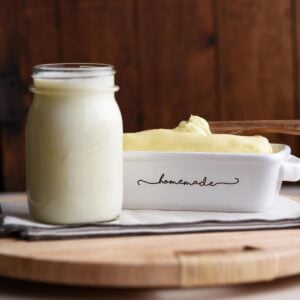
Homemade Butter and Buttermilk using Heavy Cream
Ingredients
- 4 cups heavy cream 32oz
- Salt to taste
- For buttermilk: Culture starters or use non-flavored Kefir
Mighty Mrs. is a #WalmartPartner.
Instructions
- Pour entire carton of heavy cream into a food processor, blender, or butter churn. Blend for about 10 minutes or until the fat separately completely from the liquid milk. You should see two distinctly different substances and then you know you're ready for the next step.
- Next, drain the milk into a mason jar. This is your buttermilk!If using pasteurized heavy cream, then you will need to add starter cultures to sour the milk. See above post for more info.
- Once you've drained all the milk, you'll want to rinse the fat to flush any extra hidden milk from it. This prevents the butter from being too watery and as well as from spoiling quickly.
- To rinse, add a cup of very cold water and blend. Pour off the watery milk. Go ahead and pour it down the drain, this stuff isn't worth saving.Repeat until water runs clear.
- Take the chunk of butter and wrap it in cheese cloth. Knead butter to get out any remaining liquid.
- Stir or knead in salt to taste and then shape your butter into a stick or whatever shape you prefer.

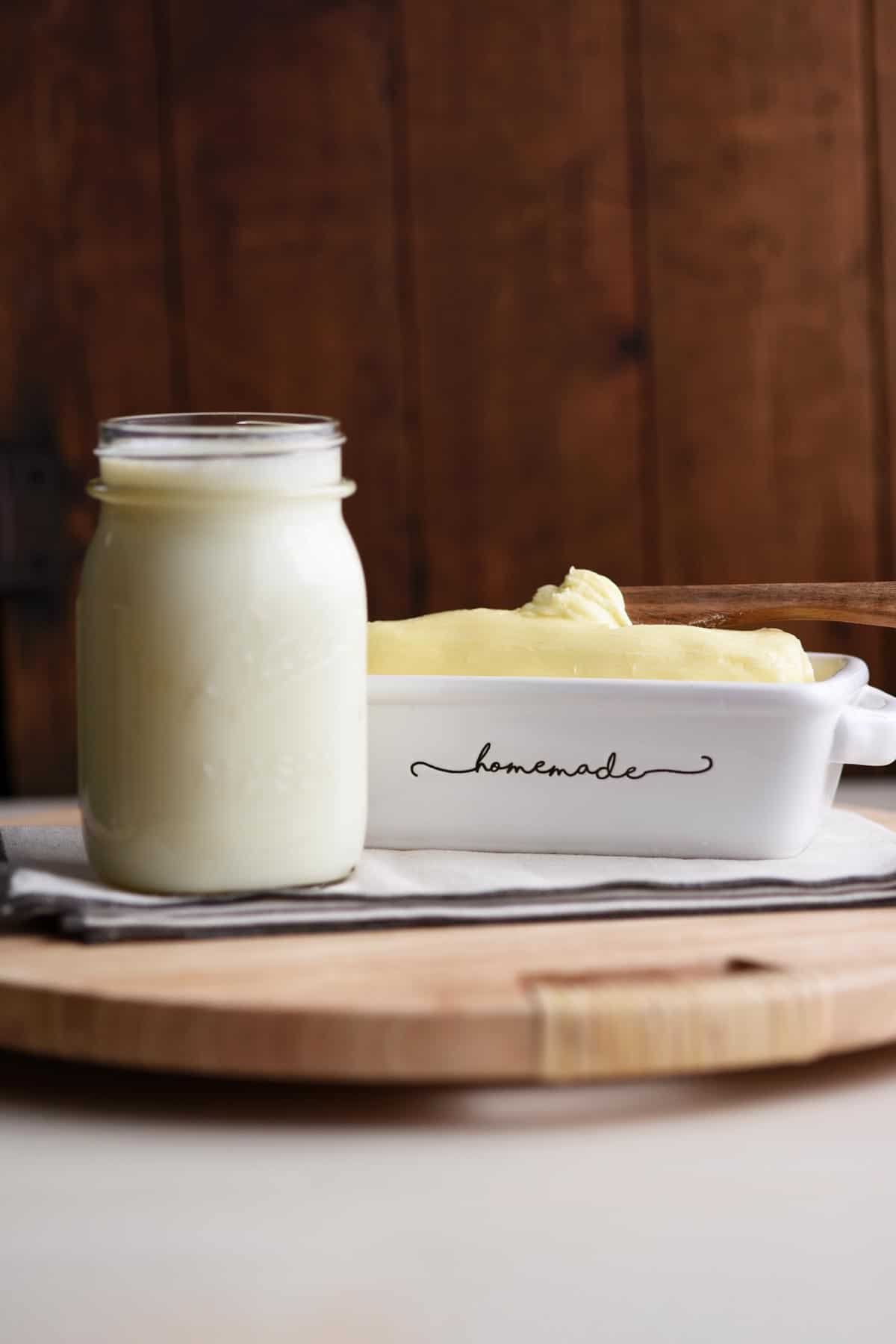
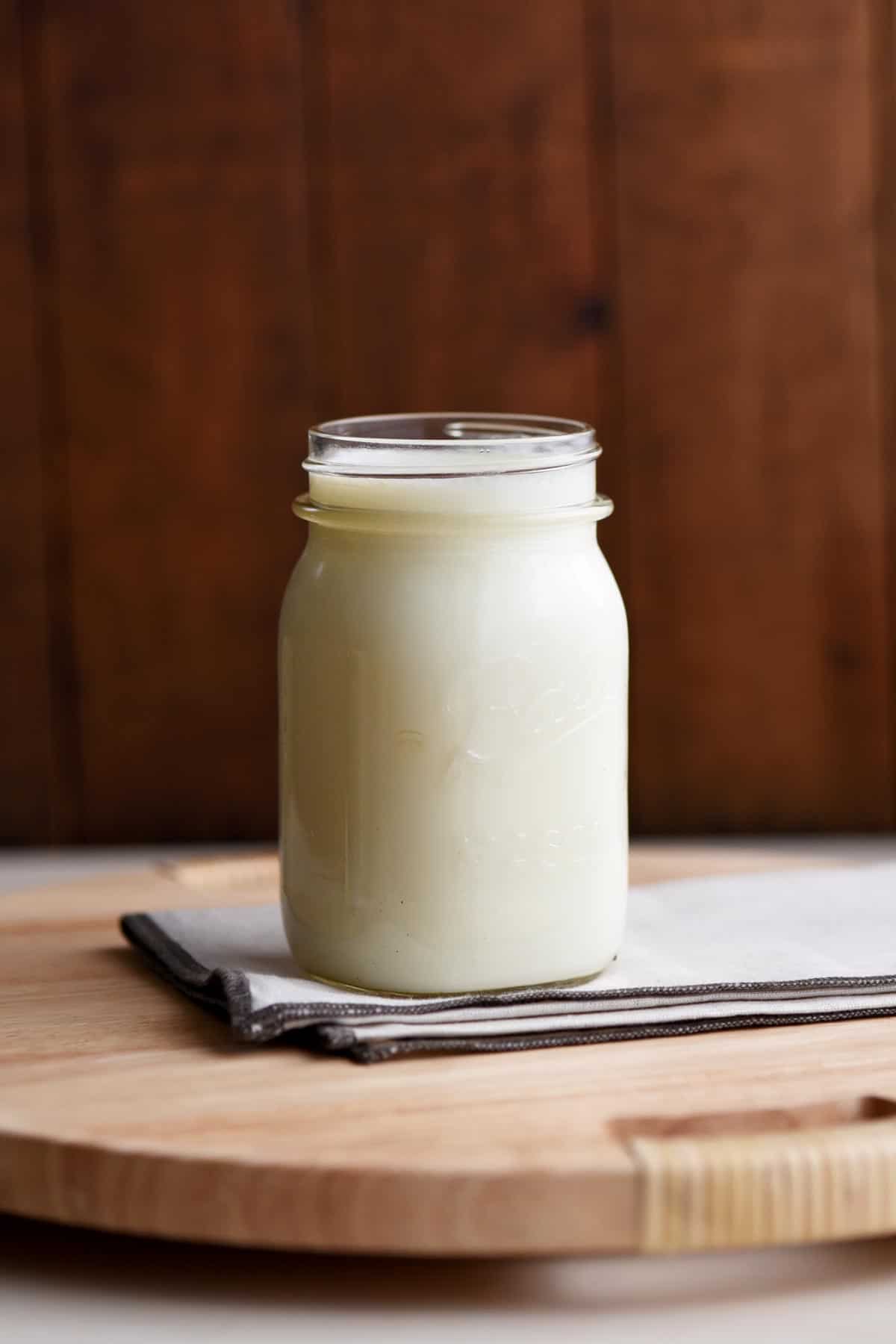
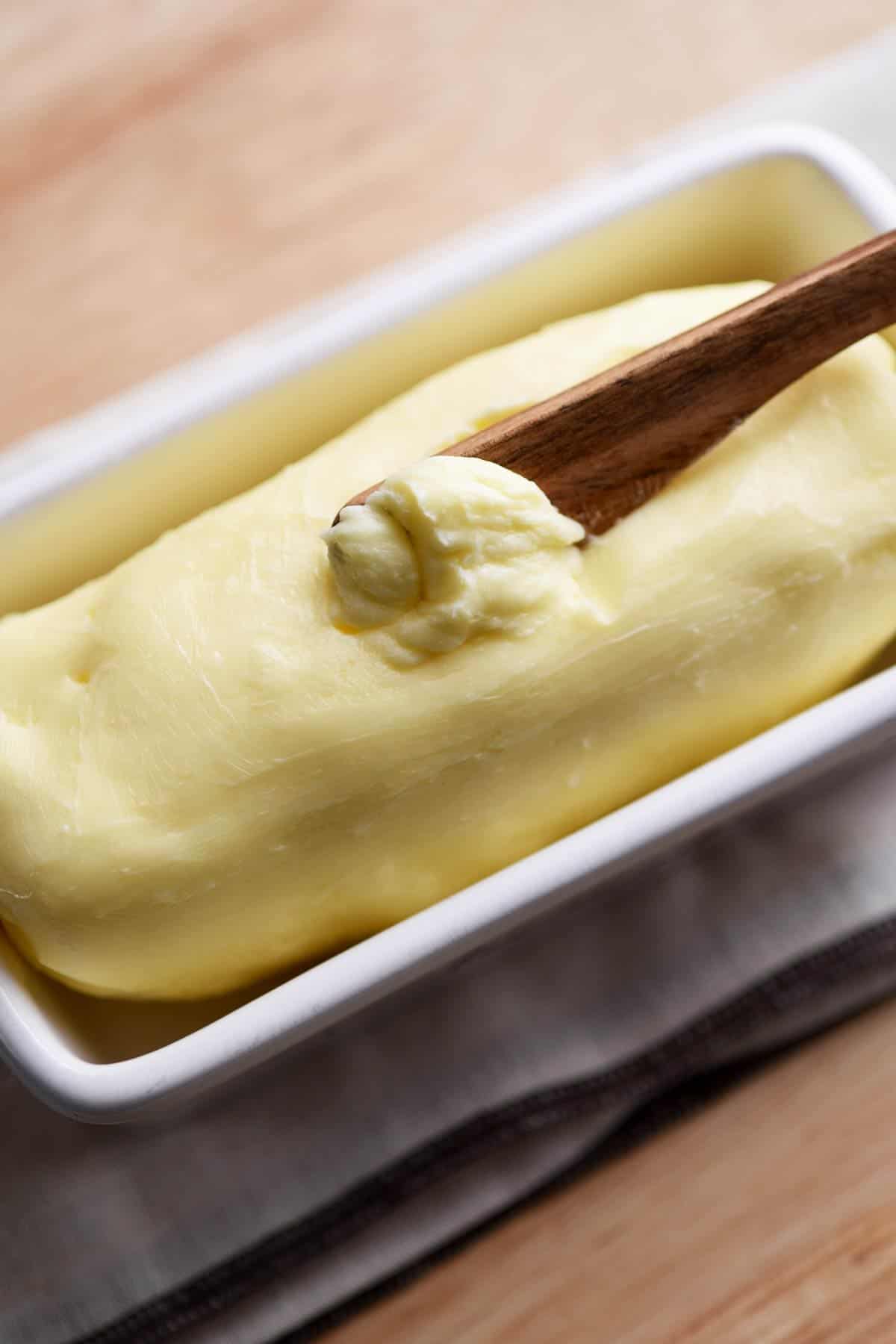
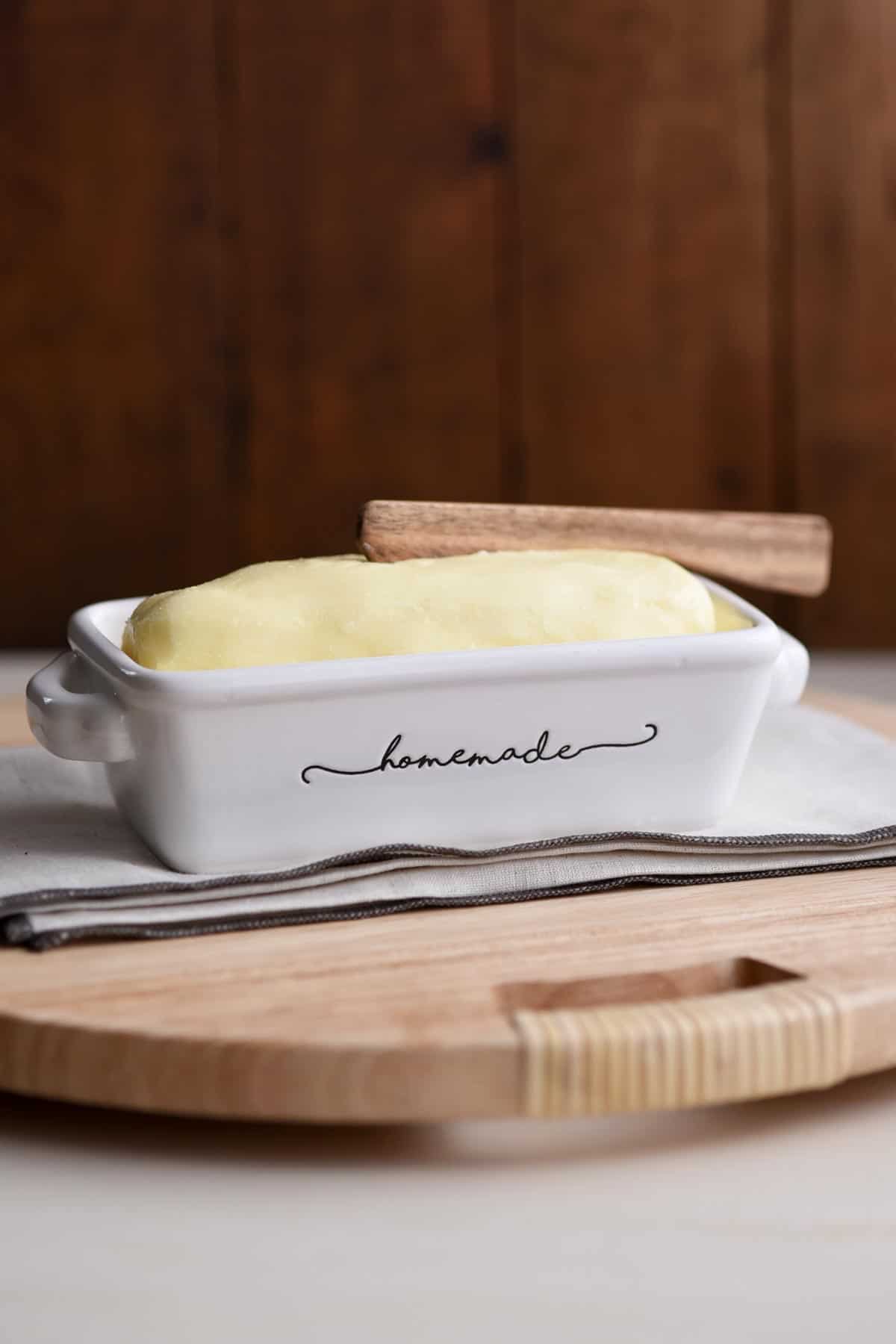
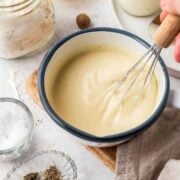
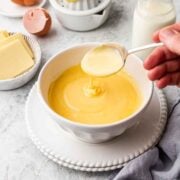
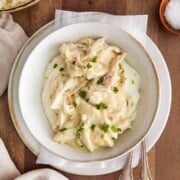
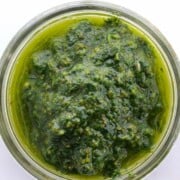
Cinthya Knox says
Hi, can I used capsuled probiotics with the prebiotics? They are the probiotic capsules I drink daily. They are in powder form. Instead of Kefir or starter?
Angela G. says
I'm not sure, Cinthya. You may be able to if they contain "live active cultures". You need those living culture to activate the process.
Wendy Edwards says
FYI- I just did experiment doing exactly that using lactobacillus blend capsules- I used t to 2 cups and let sit room temp for 24 hours. Worked like a dream lol. So happy. Have fun!